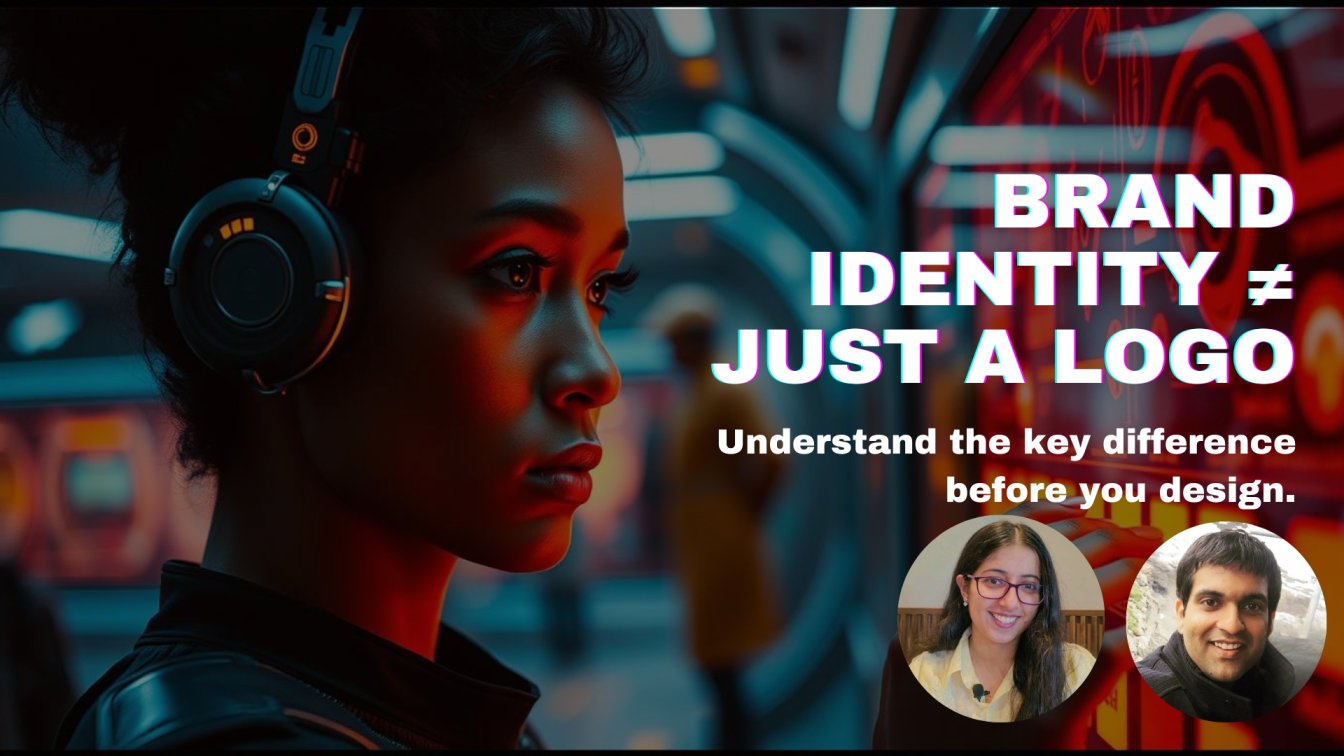
When it comes to branding, one of the most common points of confusion is the difference between brand identity vs logo design. While these terms are often used interchangeably, they are not the same. Understanding the distinction can make a world of difference in how you approach building a brand that resonates with your audience.
In this comprehensive guide, we will break down the key differences between brand identity and logo design, and why both are critical to your business success. We’ll dive into real-world examples and best practices to help you craft a brand that stands out and speaks to your customers in a meaningful way.
What Is Brand Identity?
Brand identity is the overall perception of your company or product in the market. It’s the sum of everything that your business represents and includes visual elements (like your logo, colors, and fonts) as well as emotional and cultural elements (like your messaging, values, and voice). Think of it as the complete personality of your brand.
Why Brand Identity Matters:
- Recognition: A strong brand identity makes it easier for customers to recognize and remember you.
- Trust: A consistent and professional brand identity builds trust with your audience.
- Differentiation: In crowded markets, a unique brand identity helps you stand out from competitors.
Example: Think about Coca-Cola—the logo is iconic, but it’s the red and white color scheme, the classic font, and the storytelling behind its advertising that give the brand its unique identity. The emotional connection to happiness and togetherness makes it more than just a drink—it becomes a part of life’s special moments.
What Is Logo Design?
A logo is a visual symbol or emblem that represents your business or product. It’s a crucial part of your brand identity but only one component. A logo is designed to be memorable, simple, and unique, giving consumers an easy point of recognition.
Why Logo Design Matters:
- First Impressions: Your logo is often the first thing people see when they encounter your brand. A strong, well-designed logo can spark interest.
- Visual Identity: It’s the visual shorthand for everything your brand stands for.
- Scalability: A good logo works across a variety of mediums and formats, from business cards to billboards.
Example: Nike’s swoosh—a simple, yet powerful logo that embodies movement, athleticism, and speed. It’s recognizable across the globe, even without any accompanying text, making it one of the most iconic logos in the world.
Key Differences: Brand Identity vs Logo Design
Let’s break down the main differences between brand identity and logo design to clarify how they function together to form a cohesive brand:
1. Scope of Brand Identity vs Logo Design
- Brand Identity: A comprehensive strategy that covers the visual elements (logo, color palette, typography), but also extends to messaging, tone of voice, brand values, and overall brand experience.
- Logo Design: A single visual element, often the most visible symbol of the brand, but not the full identity.
2. Purpose
- Brand Identity: Communicates your brand’s essence, values, and personality. It’s the emotional and psychological connection with your audience.
- Logo Design: A recognizable symbol that helps identify your brand at a glance.
3. Components
- Brand Identity: Includes logo, color schemes, typography, imagery, packaging design, brand messaging, and customer interactions.
- Logo Design: Includes the graphic symbol (or logotype), the font style, and sometimes, a tag line or slogan.
4. Consistency in Brand Identity vs Logo Design
- Brand Identity: Must be consistent across all touchpoints—website, social media, packaging, customer service interactions, and more.
- Logo Design: While important, a logo only needs to be consistent in its usage, size, and placement. It’s part of the overall brand identity but not the whole picture.
Real-World Examples: Brand Identity vs Logo Design
1. Apple
- Logo: The iconic apple with a bite taken out is a clean, minimalist symbol representing simplicity and sophistication.
- Brand Identity: Apple’s brand identity is defined by its design language—sleek, innovative products that evoke feelings of exclusivity and high-tech luxury. From the smooth interface of their devices to the minimalist stores and ads, everything reflects Apple’s focus on premium and user-centric design.
2. McDonald’s
- Logo: The golden arches are globally recognized and stand for speed and consistency.
- Brand Identity: McDonald’s brand identity goes beyond just the arches; it includes the customer experience, the Ronald McDonald persona, the red and yellow color scheme, and even the sound of the “I’m Lovin’ It” jingle. It’s all about fast, reliable, and affordable food served in a friendly, family-focused atmosphere.
How to Build a Strong Brand Identity
Now that we’ve established the differences between brand identity and logo design, let’s look at actionable steps for building a strong brand identity for your business.
1. Define Your Brand’s Core Values
Your brand’s core values are the principles that guide your company’s actions and decisions. Are you focused on sustainability? Innovation? Customer-centricity? Make sure your core values resonate with your audience.
Exercise: Write down your brand’s top 3 core values. For instance, Patagonia is committed to sustainability, Tesla to innovation, and Coca-Cola to happiness and togetherness.
2. Create a Visual Identity
Your logo is just one piece of this. Consider your color palette, typography, and imagery. These elements should work together cohesively to communicate your brand’s personality.
Tip: Choose colors that align with your brand’s emotions. Blue evokes trust, red signals energy and passion, green stands for growth or eco-consciousness.
3. Craft Your Brand’s Voice and Messaging
How do you communicate with your audience? Your tone should be consistent across all platforms—social media, website, customer support, and advertising.
Example: Mailchimp’s friendly and slightly humorous tone makes email marketing approachable, while Tesla maintains an authoritative and futuristic voice that reflects its innovation in electric vehicles.
4. Ensure Consistency Across All Touchpoints
From your website and social media presence to packaging and customer service, ensure that your brand’s visuals and voice are consistent across all platforms.
Case Study: Glossier, a beauty brand, keeps its visual identity consistent across its Instagram feed, website, and packaging. The pink tones and minimal design give it a clean, modern look that resonates with its millennial audience.
The Role of Logo Design in Brand Identity
While brand identity is a broad and deep concept, logo design is an integral part of that identity. A logo is the first point of contact for your audience and serves as the face of your brand. Here’s how a logo fits into the larger picture:
- Recognition: The logo is often the most recognizable element of your brand identity. It’s the symbol your customers will instantly associate with your business.
- Emotional Connection: A well-designed logo can evoke the right emotions and set the tone for how your brand is perceived.
- Consistency: A logo should be adaptable across all platforms, ensuring it looks good on websites, social media, packaging, and print materials.
Conclusion: Building a Cohesive Brand Identity
In summary, brand identity is much more than just a logo. It’s the complete perception of your business, including visual elements, messaging, and customer experience. While your logo design is an important part of this, it is only a small piece of the bigger picture.
By defining your brand’s personality, values, voice, and visual identity, you can build a brand that resonates deeply with your audience. With consistency and a clear message, you’ll create a brand that stands out, builds trust, and fosters loyalty in your customers.

